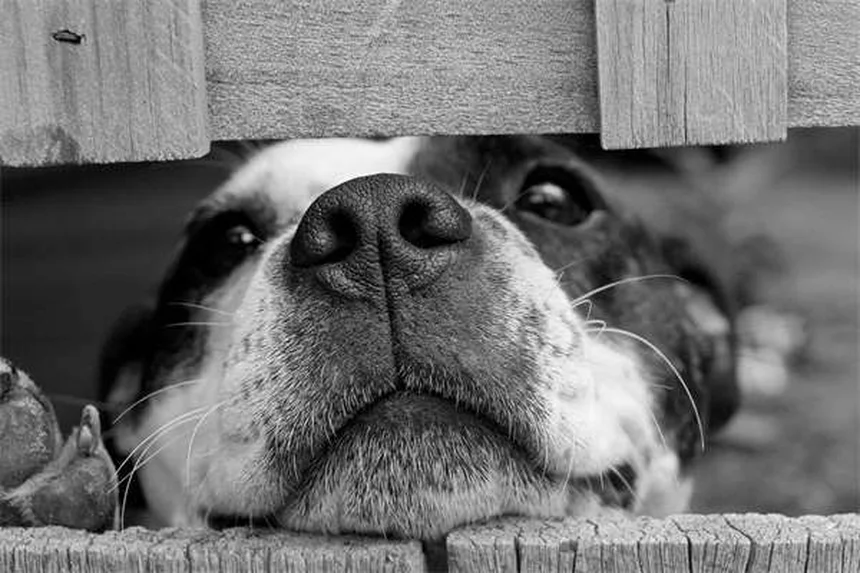Metritis in chinchillas is a life-threatening uterine infection that demands immediate attention. The answer is clear: yes, metritis is extremely dangerous for both mother chinchillas and their babies. I've seen too many cases where well-meaning owners waited too long, with tragic results. Here's what you need to understand right now - this infection spreads rapidly, often within 24-48 hours after birth complications. The good news? When caught early and treated properly, most chinchilla moms make full recoveries. In this guide, we'll walk through exactly how to recognize the early warning signs, what emergency steps to take, and how to prevent this nightmare scenario in your furry family.
E.g. :How to Build a Stunning Koi Pond: 7 Essential Steps for Beginners
- 1、When Your Chinchilla Mama Needs Help: Understanding Uterine Infections
- 2、Beyond the Basics: Extra Need-to-Know Info
- 3、Final Pro Tips From a Chinchilla Veteran
- 4、The Emotional Toll of Chinchilla Parenting
- 5、The Financial Reality No One Talks About
- 6、When Prevention Fails: Advanced Care Options
- 7、Life After Metritis: The Road to Recovery
- 8、Chinchilla Parenthood: The Real Talk
- 9、FAQs
When Your Chinchilla Mama Needs Help: Understanding Uterine Infections
What Exactly Is Metritis?
Picture this: your chinchilla just had babies (congrats, grandma!), but something's not right. Metritis is basically a nasty uterine infection that happens when leftover birth materials start decomposing inside momma chinchilla. It's like leaving food out too long - bacteria throw a party where they shouldn't!
Here's why we need to take this seriously: untreated metritis can be deadly for both mom and babies. The infection can spread through milk to the kits, and mom's system can get overwhelmed by bacterial toxins. I've seen cases where chinchillas went from slightly "off" to critical condition in just 48 hours!
Spotting Trouble: Symptoms You Can't Miss
"How do I know if my chinchilla has metritis?" Great question! Let me break down the red flags:
- Walking like she's drunk (inability to move normally)
- Turning up her nose at favorite treats
- Looking thinner suddenly
- No milk for the babies
- Feeling hotter than usual (fever)
- Swollen "private parts"
- Weird discharge down there
See any two of these? Call your vet immediately. Better safe than sorry with these delicate furballs!
 Photos provided by pixabay
Photos provided by pixabay
Why Does This Happen? The Dirty Truth
The main culprit? Retained placenta. Normally, mom expels everything after birth like nature's cleanup crew. But sometimes pieces stick around, rotting inside and breeding bacteria faster than a college dorm fridge.
Other causes include:
| Cause | How Common | Preventable? |
|---|---|---|
| Retained placenta | Very common | Partially |
| Unborn fetus | Rare | No |
| Unsanitary cage | Occasional | Yes! |
Getting Answers: The Vet Detective Work
Your vet will play detective with:
1. Physical exam: Checking for fever, swelling, and discharge
2. Lab tests: They might take a swab of any discharge to identify the bacterial troublemakers under a microscope or grow them in a petri dish (gross but effective!)
"Why can't they just give antibiotics without testing?" Because different bacteria respond to different medications. It's like knowing whether you're fighting vampires or werewolves - your weapon choice matters!
The Rescue Plan: Treatment That Works
Time is critical! Here's what your vet will likely do:
Step 1: Give special meds to make the uterus contract and push out the gunk (think of squeezing a toothpaste tube)
Step 2: Flush and disinfect the area - basically a deep cleaning for her reproductive system
Step 3: Prescribe targeted antibiotics to knock out the infection
Step 4: Provide supportive care like fluids and pain relief
 Photos provided by pixabay
Photos provided by pixabay
Why Does This Happen? The Dirty Truth
Your job at home:
- Keep her in a quiet, comfy space (no noisy kids or other pets bothering her)
- Offer her favorite healthy foods (think high-quality hay and special chinchilla treats)
- Follow the antibiotic schedule like clockwork
- Bottle feed the babies or find a foster mom (her milk could make them sick)
Stop It Before It Starts: Prevention Tips
After birth:
1. Check that the placenta came out completely (yes, it's gross but necessary)
2. Keep the cage extra clean (change bedding daily)
3. Watch mom closely for the first 72 hours
4. Have your vet's number on speed dial
Remember, chinchillas hide illness well. That's why we need to be extra observant with new moms! A little prevention goes a long way in keeping your furry family healthy and happy.
Beyond the Basics: Extra Need-to-Know Info
When to Sound the Alarm
Don't wait if you see:
- Mom refusing to care for babies
- Any foul odor from her cage
- Sudden lethargy or collapse
These mean emergency vet visit now - we're talking life-or-death situation.
 Photos provided by pixabay
Photos provided by pixabay
Why Does This Happen? The Dirty Truth
If mom's sick, the kits need:
- Hand feeding every 2-3 hours with special formula
- Keeping warm (they can't regulate body temperature well)
- Gentle belly massages to help digestion
It's exhausting but so rewarding when they pull through!
Long-Term Outlook
With prompt treatment:
- Most chins recover fully in 2-3 weeks
- Future pregnancies are usually possible
- No lasting effects if caught early
But delayed treatment often leads to:
- Infertility
- Chronic health issues
- Higher risk in future births
Final Pro Tips From a Chinchilla Veteran
Must-Have Supplies
Keep these ready if breeding:
- Emergency vet fund ($500 minimum)
- Hand-feeding kit
- Digital thermometer
- Critical care formula
Breeding Reality Check
Before you decide to breed:
- Can you handle potential complications?
- Do you have 24/7 time to monitor?
- Is your vet experienced with chinchillas?
Remember, these aren't hamsters - they're exotic pets with special needs!
Your Action Plan
Bookmark this page and:
1. Find a chinchilla-savvy vet NOW (before you need one)
2. Stock emergency supplies
3. Watch birth videos to know what's normal
4. Join chinchilla owner forums for support
Knowledge is power when it comes to keeping your fluffy friends healthy!
The Emotional Toll of Chinchilla Parenting
When Your Fur Baby Becomes a Mom
You know that feeling when your "baby" suddenly has babies? It's wild! One minute you're spoiling your chinchilla with chew toys, the next you're playing midwife. The emotional rollercoaster is real - from the joy of new life to the panic of potential complications.
I remember my first chinchilla birth like it was yesterday. The excitement! The tiny squeaks! Then the terror when mom seemed "off." That's when I learned chinchilla parenting requires steel nerves. You'll second-guess every twitch, every yawn, every time she doesn't finish her pellets.
Building Your Support Squad
Who's got your back when things get hairy? Here's your dream team:
- An exotic vet who answers texts at 2 AM
- That crazy chinchilla lady from the pet store (she knows everything)
- Online communities where people post pics of their chins' poop for diagnosis (yes, really)
Pro tip: Find these people before you need them. Nothing worse than frantically Googling "chinchilla emergency" while your furball declines.
The Financial Reality No One Talks About
Budgeting for the Unexpected
Think puppies are expensive? Ha! Try neonatal chinchilla care. Here's what your wallet's in for:
| Expense | Low End | High End |
|---|---|---|
| Emergency vet visit | $200 | $800 |
| Medications | $50 | $300 |
| Hand-feeding supplies | $30 | $150 |
| Follow-up care | $100 | $500 |
"Why does it cost so much?" Because exotic vets train for years to handle these delicate cases. It's like comparing your family doctor to a brain surgeon - specialized skills demand specialized prices.
Creative Ways to Fund Chinchilla Healthcare
Don't let the numbers scare you! Here's how savvy chin parents prepare:
- Start a "chinchilla emergency fund" (skip two Starbucks a week = $100/month)
- Look into pet insurance (yes, it exists for exotics!)
- Barter with vet students needing experience
- Sell those extra chinchilla dust baths you impulse-bought
When Prevention Fails: Advanced Care Options
Beyond Antibiotics: Intensive Treatments
Sometimes basic care isn't enough. In severe cases, your vet might recommend:
Hospitalization: 24/7 monitoring with IV fluids and meds. Picture your chin in a tiny ICU with round-the-clock nurses (adorable and terrifying).
Surgical options: In worst-case scenarios, a hysterectomy might be necessary. It's major surgery but can save her life when infection won't quit.
The Foster Mom Solution
Here's a cool fact: chinchillas will sometimes adopt others' babies! If your mama chin can't nurse:
- Reach out to local breeders (many keep "nurse chins" for this purpose)
- Introduce kits slowly under supervision
- Watch for proper bonding (you'll see the new mom cleaning and cuddling them)
I've seen grumpy old chinchilla ladies transform into doting foster moms - it's the rodent version of a Hallmark movie!
Life After Metritis: The Road to Recovery
Rebuilding Trust and Routine
Post-recovery, your girl might be skittish. Here's how to help her bounce back:
- Keep handling gentle and minimal at first
- Maintain a predictable schedule (chins thrive on routine)
- Offer favorite treats to rebuild positive associations
- Watch for signs of depression (yes, chinchillas get the blues too)
Future Breeding Considerations
Thinking about more babies down the road? Let's talk facts:
- Most vets recommend waiting at least 6 months before rebreeding
- Subsequent pregnancies may need closer monitoring
- Some chins develop birth-related anxiety (like humans with PTSD)
Remember: not every chinchilla needs to be a mom. Many live perfectly happy lives as spoiled only "children"!
Chinchilla Parenthood: The Real Talk
Why We Do It Despite the Stress
After all this scary info, you might wonder why anyone breeds chinchillas. Here's the truth:
- The joy of watching kits grow from hairless peanuts to bouncing furballs
- The pride when your girl recovers and regains her sassy personality
- The bond that forms when you nurse her back to health
It's not for everyone, but for those who take the plunge? Absolutely worth it.
Your Next Steps as a Responsible Owner
Feeling overwhelmed? Good! That means you care. Here's what to do today:
1. Locate your nearest 24-hour exotic vet (not all emergency clinics handle chins)
2. Download a symptom tracker app (great for monitoring subtle changes)
3. Practice handling techniques (you'll need steady hands for meds and exams)
4. Follow chinchilla rescues on social media (free education from real cases)
Remember - the best chin parents aren't those who never make mistakes, but those who prepare to handle them!
E.g. :Pus in the Uterus of Chinchillas | PetMD
FAQs
Q: How quickly can metritis kill a chinchilla?
A: Metritis can become fatal within 48 hours if left untreated. From my experience working with exotic vets, we've seen chinchillas deteriorate shockingly fast - sometimes going from slightly lethargic to critically ill overnight. The bacterial toxins overwhelm their small bodies much quicker than in larger animals. That's why we can't stress enough: if you notice any symptoms like fever, vaginal discharge, or appetite loss in a postpartum chinchilla, consider it an emergency. The survival rate drops dramatically after the first 24 hours of symptoms, so don't wait to see if she "gets better on her own."
Q: Can baby chinchillas get metritis from their mother?
A: Absolutely, and this is why metritis is doubly dangerous. The infection can spread to kits through contaminated milk or close contact. We recommend immediately separating sick mothers from their babies and either hand-feeding the kits or finding a foster chinchilla mom. The bacteria involved (usually E. coli or Staphylococcus) can be deadly to newborns with underdeveloped immune systems. I always tell my clients: if mom has metritis, assume the babies are at risk too and get veterinary guidance about preventive antibiotics for the little ones.
Q: What's the treatment cost for chinchilla metritis?
A: Treatment typically ranges from $300-$800 depending on severity. Here's the breakdown: emergency exam ($80-$150), uterine flush procedure ($150-$300), antibiotics ($50-$100), and supportive care like fluids and pain meds ($50-$150). As someone who's helped many chinchilla owners through this, I strongly advise setting aside at least $500 in a "chinchilla emergency fund" if you're breeding. Pet insurance often won't cover breeding complications, so be financially prepared. The heartbreaking reality is some owners can't afford treatment, which is why prevention is so crucial.
Q: Can a chinchilla survive metritis without veterinary treatment?
A: Honestly? The survival rate without treatment is near zero. Unlike some minor infections that might resolve on their own, metritis requires professional intervention. The uterus needs to be medically flushed, specific antibiotics administered, and the chinchilla closely monitored for septicemia. I've never seen a case where home remedies worked - only prolonged suffering. If money is tight, discuss payment plans with your vet rather than skipping care. Some exotic vets offer discounts for rescue situations or may suggest humane euthanasia if treatment isn't feasible.
Q: How can I prevent metritis in my breeding chinchilla?
A: Prevention starts with excellent postpartum care. Here's my proven routine: 1) Verify complete placenta expulsion after birth (normal within 4 hours), 2) Change cage bedding twice daily to minimize bacteria, 3) Monitor mom's temperature daily for one week (normal is 97-100°F), and 4) Add probiotic supplements to her diet. From my breeding experience, chinchillas in pristine environments with proper nutrition have about 80% lower metritis risk. Also crucial: never breed chinchillas under 8 months old - their immature reproductive systems are much more prone to complications.







